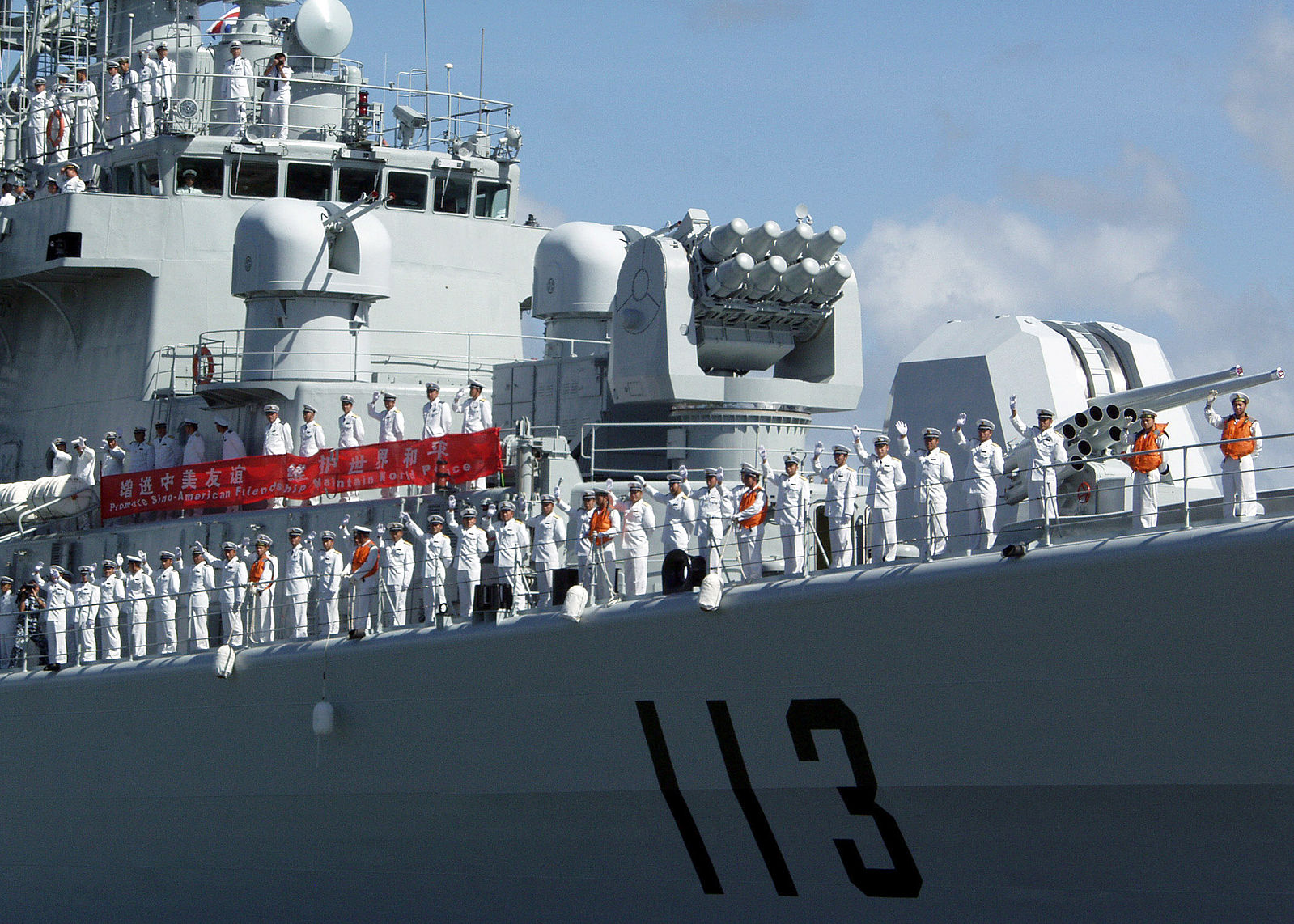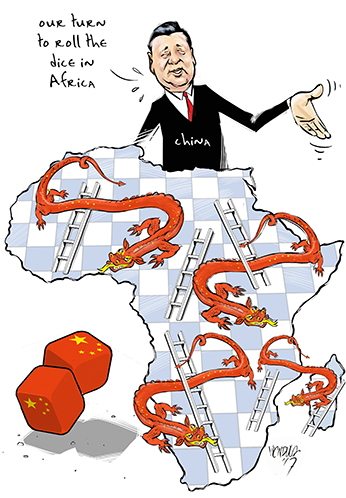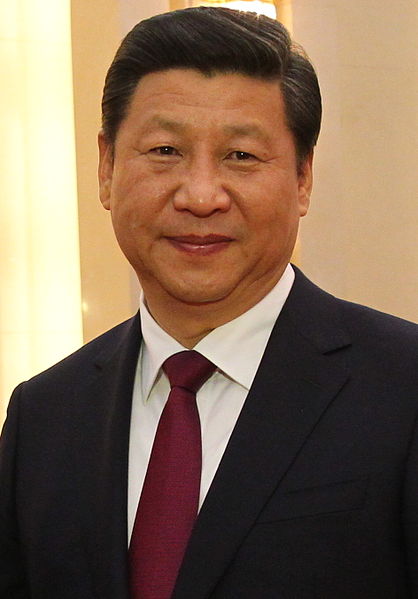
Sailors aboard the Chinese Navy destroyer Qingdao (DDG 113) man the rails as they depart Pearl Harbor. Image Wikimedia Commons.
China’s stakes in marine bases across Africa are unsettling the world’s major and minor powers, and could force the continent’s countries to take sides
African countries may face harsh choices in what could become a new Cold War. Last year China began constructing a military base in Djibouti in the Horn of Africa. It is China’s first-ever military base outside the country and will give the Asian powerhouse a naval presence on a key oil route. A base in Djibouti would also offer China a useful staging point for possible interventions in the continent.
The United States (US), a number of other Western countries, and Japan and Saudi Arabia already have bases in Djibouti. The US has a large facility on the island of Diego Garcia. China is playing catch-up in the Indian Ocean, and this suggests that an arms race is brewing. According to IRIN News, India has a listening post in Madagascar to monitor shipping and communications, and has been allocated land for a naval base in Seychelles.
China’s naval focus is in the South China Sea, where fears over its extensive land reclamation and building projects have strained relations with other countries that have territorial claims in the area. This has made Malaysia, the Philippines, Taiwan and Vietnam nervous, and has become a source of tension between China and the US.
In 2014 the Chinese began dredging and pumping sea sediment to change seven rocks and features into artificial islands, which it then occupied. In the following year China started to construct ports, airstrips and buildings on the islands. A 2015 paper produced by the International Institute for Strategic Studies suggested that the land reclamation over the past three years is the culmination of a long-term plan that began modestly in the 1970s and is now bearing fruit. According to the report, “China’s gradualist approach and capacity to manage port construction and rehabilitation, and linked infrastructure projects, could emerge as the key element in its current power play in the Indian Ocean.”
Upgraded African ports and infrastructure will ultimately yield economic development and growth for their host countries, but also, inevitably, a strong dose of political influence for China, as well as power projection into the Indian Ocean.
China may also take a share of the Simon’s Town naval dockyard in South Africa. In September last year South Africa’s state-owned defence company, Denel, and Poly Technologies – part of China’s state-owned China Poly Group – signed a memorandum of understanding in which Poly Technologies would have a stake in the shipyard. There have been no public developments on the matter since the signing, but a Chinese stake in the dockyard would certainly annoy the US and other Western powers, and India.
China has invested particularly heavily in its navy and air force. In the 1980s the navy focused on protecting the Chinese coastline. Today the Chinese navy is a blue water force with a formidable fleet of submarines, destroyers and corvettes – many equipped with sophisticated long-range missiles. In 2012 China launched its first aircraft carrier, the Liaoning; a second is under construction and a third is planned. While Liaoning does not match any US carrier in terms of performance, it has been termed a “starter” carrier.
China has a legitimate and substantial interest in Indian Ocean security. It is heavily reliant on Middle Eastern and, to a lesser extent, Angolan oil, which is transported across the Indian Ocean. Speaking in 1993, the year that formally marked the start of China’s offshore defence mission, Chinese President Xi Jinping spoke of China’s “Malacca dilemma”. More than 60% of the country’s oil imports pass through three choke points: the Malacca, Sunda, and Lombok Strait.
China’s need for a continuous supply of reasonably priced oil to ensure economic growth and hence political stability suggests that it needs a sizeable naval presence to protect this economic lifeline. But doing so will rub up against the existing powers in the Indian Ocean – the US and India.
Official sources often link China’s rise as a sea power and its historical links with the Indian Ocean to Admiral Zheng He’s fleet’s voyage to Africa during the Ming Dynasty in the early 15th century. Chinese officials cite Zheng He’s story to show that, unlike Western nations, China did not colonise; it only traded with African societies.
But things change. As Thayer Mahan, the 19th century American admiral, famously pointed out; the ability to project naval power is crucial in building and maintaining empires. China’s 2015 defence white paper stressed the role of the seas and pointed to a greater blue water role for its navy. Official impetus has also come from one of Xi’s foremost initiatives; to build a New Silk Road, the maritime component of which passes through the Indian Ocean.
India, a nuclear power and China’s main Asian rival, is concerned about its naval posture, including visits from Chinese submarines armed with ballistic missiles to Pakistani and Sri Lankan ports. The navies of the US and other Western powers are also worried by China’s intentions and ability to project power at an increasing distance from its home shore. Asian tensions and those in the South China Sea are bound to spread into other oceans.
The more immediate issue is China’s search for ports. Chinese companies have poured investment into harbours around the world, including in Africa. Arrangements vary, but include port construction, management, ownership and shareholdings in container terminals.
The Financial Times has identified what it describes as “dual use” ports, which China could upgrade from commercial to naval use. In Africa these ports are listed as Djibouti, Seychelles, Walvis Bay in Namibia, and the island of São Tomé and Príncipe, off the coast of West Africa. China has also invested in other African ports, including Beira and Maputo in Mozambique and Cabinda in Angola.
In what could be a model for other port projects in Africa, the Djibouti base will be linked to other infrastructure and commercial investments. China has invested heavily in Djibouti’s infrastructure and industry, and has built a 750 km railway to Addis Ababa. According to an article last year in The Diplomat, Chinese authorities have been careful to downplay the military aspect of the base and have denied it would be used to project military power into Africa.
Professor Renfrew Christie, former dean of research at the University of the Western Cape and a naval historian, believes there is an urgent need for India, African countries such as South Africa and Kenya, and Angola and Nigeria on the Atlantic, to try and balance Chinese naval power. The US policy “pivot” to Asia and the Pacific is leaving a gap that China will increasingly fill.
He points out that India will soon have a population larger than China’s, which could, in time, help it to rival Beijing in military terms. And if African economic growth surges, far larger navies might be a possibility.
Africa’s response to China’s stake in ports and construction on the continent seems to be one of acceptance rather than to search for other deals. Defence analyst Helmoed Heitman suggests this could be due to “the agricultural mentality” or landward focus of many African governments. He does not exclude the possibility of governments being bought, and adds that should the Chinese take up a stake in Simon’s Town, South Africa could pay a heavy diplomatic cost; Simon’s Town would give China access to the country’s main naval base.
South Africa would find it hard to counter any political fallout from a deal that bears overtones of imperialism. It might also find itself siding with one BRICS partner, China, against another, India, and annoying one more, Russia. Meanwhile, the West could see this as a potentially hostile move.












